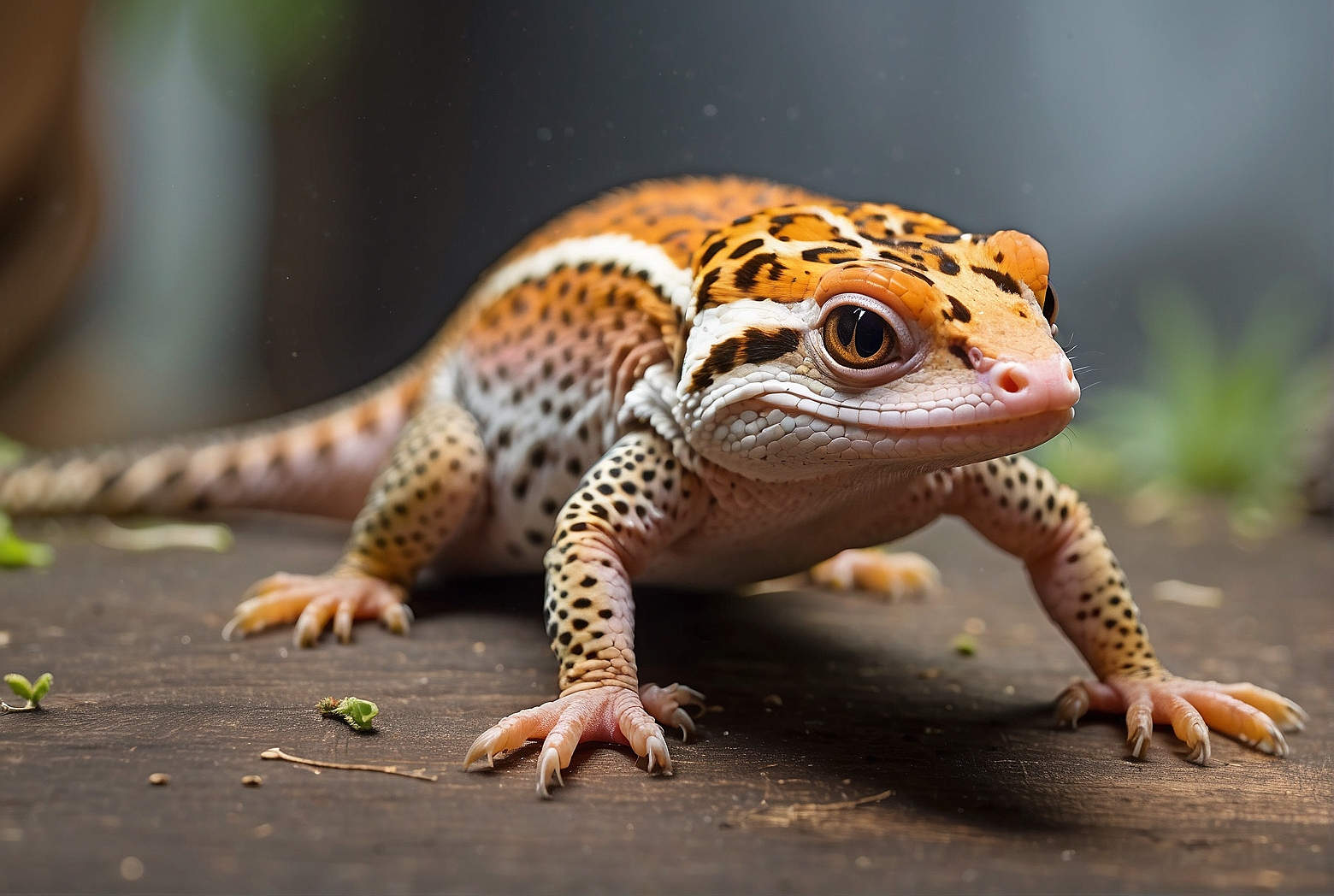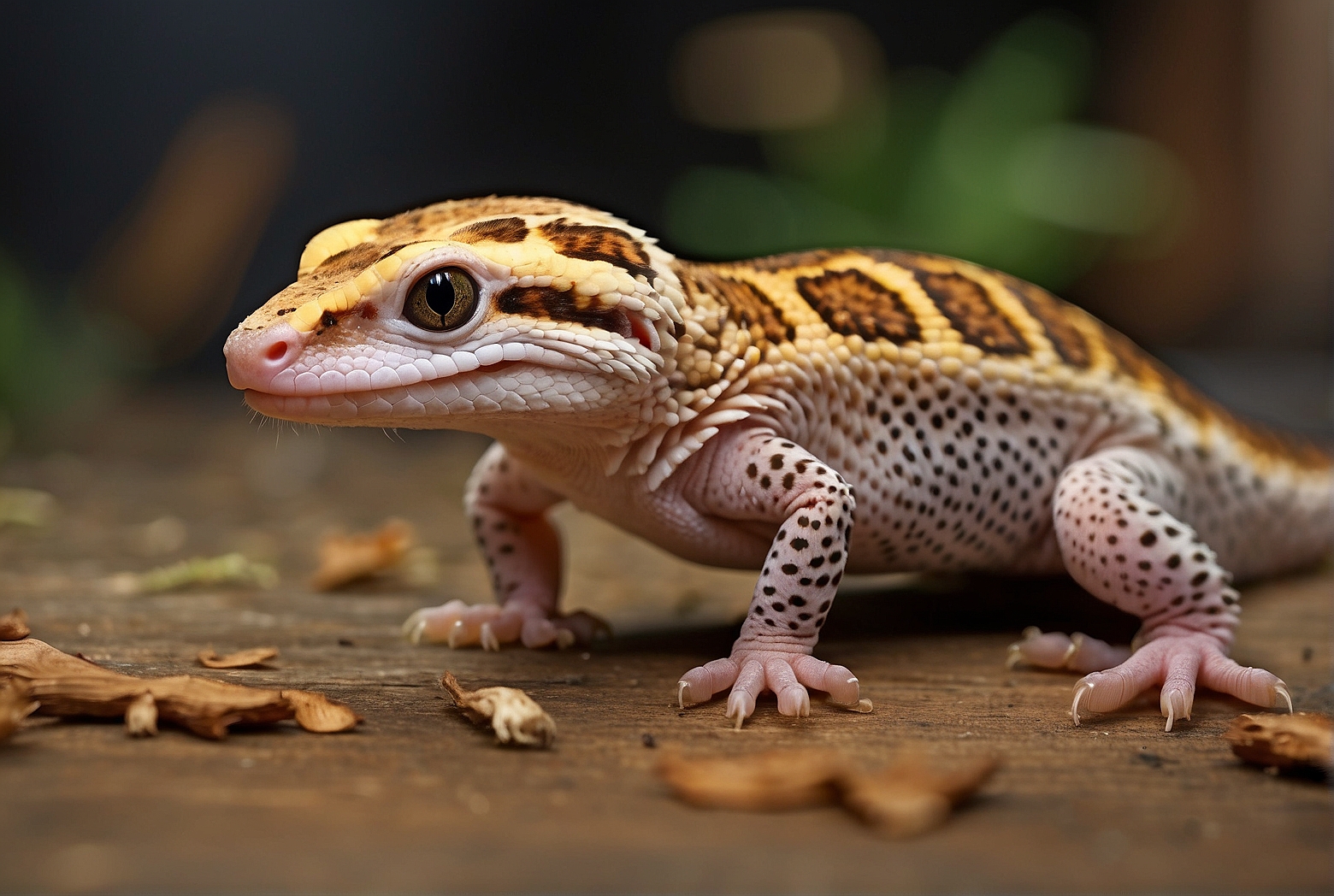Have you been concerned about your leopard gecko not eating its shed? If so, you’ve come to the right place. In this article, we’ll explore the reasons behind why your leopard gecko might not be interested in eating its shed. By understanding these factors, you can provide the necessary care to ensure your gecko’s health and well-being. Don’t worry, we’ve got you covered with all the information you need!
Causes of Leopard Gecko Not Eating Shed
Lack of Proper Humidity
One possible cause of a leopard gecko not eating shed is a lack of proper humidity in their enclosure. Leopard geckos require a humid environment to aid in the shedding process. Insufficient humidity can cause the shed to become dry and difficult to remove, leading to potential complications.
Inadequate Temperature
Another factor that may contribute to a leopard gecko not eating shed is inadequate temperature in their habitat. Leopard geckos require specific temperature ranges to support their metabolic processes and facilitate shedding. Incorrect temperatures can result in the shedding process being hindered or delayed.
Improper Diet
A leopard gecko’s diet plays a significant role in their overall health and shedding process. If they are not receiving a balanced diet that meets their nutritional needs, it can lead to complications during shedding. Insufficient nutrients, such as calcium or vitamins, can result in poor shedding and overall health issues.
Stress or Anxiety
Stress or anxiety can also cause a leopard gecko to experience difficulties during shedding. Factors such as constant handling, noisy environments, or the presence of other pets may induce stress in these small reptiles. Stress can disrupt their feeding and shedding patterns, leading to incomplete shedding and other health problems.
Underlying Health Issues
Leopard geckos with underlying health problems may struggle to shed properly. Issues such as dehydration, skin infections, or metabolic disorders can interfere with the shedding process. If a leopard gecko consistently experiences difficulties in shedding, it may be a sign of an underlying health condition that requires attention.

Inappropriate Enclosure Setup
An improper enclosure setup can hinder a leopard gecko’s shedding process. Factors such as inadequate lighting, insufficient hiding places, or inappropriate substrate can all contribute to difficulties during shedding. Creating a suitable habitat that mimics their natural environment is essential for proper shedding.
Effects of Not Eating Shed
Incomplete Shedding
When a leopard gecko is unable to eat their shed properly, it can result in incomplete shedding. This means that fragments of the old skin remain stuck to their body, particularly on the toes, tail, or head. Incomplete shedding can be uncomfortable for the gecko and may cause further complications if not addressed promptly.
Skin Problems
Not eating shed can also lead to various skin problems in leopard geckos. When the shed does not come off completely, it can cause irritation, inflammation, and even skin infections. The trapped shed can create a breeding ground for bacteria or fungal growth, potentially causing further discomfort and health issues.
Poor Health and Weak Immune System
Continuous difficulties with shedding can have long-term effects on a leopard gecko’s overall health and immune system. Inadequate shedding and subsequent skin problems can weaken their immune system, making them more susceptible to infections. Additionally, poor nutrition due to not eating shed can cause weight loss and a general decline in health.
Identifying the Issue
Observing Shedding Behavior
To determine if a leopard gecko is not eating shed, it is important to observe their shedding behavior carefully. Pay attention to any abnormal or prolonged shedding processes, as well as signs of distress during shedding. This observation can help identify potential issues and prompt necessary interventions.
Checking for Signs of Incomplete Shedding
Inspecting the leopard gecko’s body is crucial for identifying signs of incomplete shedding. Look for remnants of old skin stuck to their toes, tail, or head. Any areas where the shed appears to be retained or difficult to remove may indicate a problem. Regularly check their shed and examine their skin to ensure complete removal.

Assessing Skin Condition
Examining the leopard gecko’s skin condition is essential for identifying any underlying issues. Look for redness, swelling, lesions, or signs of infection on their skin. Any abnormalities in skin texture or appearance, such as dryness or excessive flaking, can also indicate potential problems related to shedding.
Monitoring Overall Health
Monitoring the leopard gecko’s overall health is crucial when they are experiencing difficulties with shedding. Keep an eye on their appetite, weight, and energy levels. Any significant changes or decline in their general well-being can be indicative of underlying health issues that may contribute to not eating shed.
Resolving Humidity Issues
Providing a Humid Hideout
One way to address humidity-related shedding problems is by creating a humid hideout within the leopard gecko’s enclosure. This hideout should contain a moist substrate or moss to maintain a higher level of humidity. The gecko can retreat to this area when they need additional moisture during shedding.
Misting the Enclosure
Misting the leopard gecko’s enclosure regularly can help increase humidity levels. Use a spray bottle filled with distilled water to lightly mist the enclosure, focusing on the warm side where the gecko spends most of their time. Be cautious not to make the enclosure excessively wet, as it may lead to other issues like bacterial growth or respiratory problems.
Using Moist Substrate
Selecting an appropriate substrate that retains moisture well can contribute to maintaining humidity levels in the enclosure. Natural substrates such as coconut fiber or sphagnum moss can be used to create a humid environment. Ensure that the substrate is moist, but not soaking wet, to prevent excessive moisture build-up.
Adding a Water Dish
Having a water dish in the leopard gecko’s enclosure can also help increase humidity. The gecko may drink from the dish, and the evaporation of water can contribute to the overall humidity levels in the enclosure. Ensure that the water dish is clean and always filled with fresh, chlorine-free water.
Maintaining Proper Temperature
Using Appropriate Heat Sources
Maintaining proper temperatures in the leopard gecko’s enclosure is crucial for their overall well-being and shedding process. Ensure the use of appropriate heat sources such as under-tank heat pads or ceramic heat emitters. These heat sources should provide a warm side with a temperature gradient that allows the gecko to regulate their body temperature effectively.
Ensuring Proper Temperature Gradient
Creating a temperature gradient within the leopard gecko’s enclosure is essential. This means providing a warmer area for basking and a cooler area for the gecko to retreat to when they need to cool down. The temperature gradient helps the gecko choose the optimal temperature for shedding and other metabolic processes.
Using Thermometers and Thermostats
To ensure accurate temperature regulation, it is important to use thermometers to monitor the temperatures in the enclosure. Thermometers placed in various spots can help keep track of the temperature gradient and make adjustments if necessary. Additionally, using thermostats can regulate the heat sources and prevent temperature fluctuations.
Adjusting Diet
Offering Varied Foods
A balanced diet is crucial for a leopard gecko’s overall health and shedding process. Ensure their diet consists of a variety of appropriately sized live insects, such as crickets, mealworms, or dubia roaches. Providing a diverse range of prey items can help meet their nutritional needs and support proper shedding.
Supplementing Calcium and Vitamins
Supplementing the leopard gecko’s diet with calcium and vitamins is important, especially during shedding. Dusting the insects with a reptile-safe calcium and vitamin supplement can ensure they receive essential nutrients. Consult a reptile veterinarian for guidance on appropriate supplementation and frequency.
Avoiding Overfeeding or Underfeeding
Maintaining the right feeding schedule and portion sizes is crucial for a leopard gecko’s health and shedding. Overfeeding can lead to weight gain and other health problems, while underfeeding can result in nutritional deficiencies. Finding the right balance and monitoring their weight can ensure optimal shedding and overall well-being.
Reducing Stress and Anxiety
Providing Hiding Places
Creating ample hiding places within the leopard gecko’s enclosure can help reduce stress and anxiety during shedding. Place hides in various locations and ensure they are appropriately sized for the gecko to comfortably retreat into. These hiding places provide a sense of security and privacy, minimizing stress during the shedding process.
Minimizing Handling
Excessive handling during the shedding process can cause stress and negatively impact the gecko’s ability to eat their shed. Avoid unnecessary handling during this time and allow the gecko to go through the shedding process undisturbed. Minimizing stress can improve their overall shedding experience.
Ensuring a Quiet and Calm Environment
A quiet and calm environment is essential for reducing stress and anxiety in leopard geckos. Avoid loud noises, sudden movements, or unnecessary disturbances near their enclosure. Providing a peaceful atmosphere allows the gecko to focus on shedding and reduces the likelihood of not eating shed.
Addressing Underlying Health Issues
Consulting a Reptile Veterinarian
If a leopard gecko consistently experiences difficulties with shedding despite addressing environmental factors, consulting a reptile veterinarian is recommended. A veterinarian with experience in reptile care can conduct a thorough examination and provide appropriate guidance.
Performing Necessary Tests and Examinations
The reptile veterinarian may perform various tests and examinations to identify any underlying health issues contributing to not eating shed. These tests may include blood work, skin scrapings, or X-rays to assess the gecko’s overall health and identify potential causes of the shedding problems.
Administering Medications or Treatments
Based on the diagnostic results, the reptile veterinarian may recommend specific medications or treatments to address any underlying health issues. This could involve administering antibiotics for infections, providing hydration therapy for dehydration, or prescribing appropriate therapies based on the diagnosis.
Ensuring Proper Enclosure Setup
Proper Lighting and UVB Exposure
Leopard geckos require appropriate lighting and exposure to UVB rays to support their overall health and shedding process. Ensure the enclosure has proper lighting fixtures, including UVB bulbs specifically designed for reptiles. Follow the manufacturer’s recommendations for the correct placement and duration of UVB exposure.
Adequate Substrate
Selecting the right substrate is crucial for a leopard gecko’s enclosure setup. Avoid using substrates that can cause issues during shedding, such as loose particles that can get stuck on the gecko’s skin. Suitable substrates include reptile carpet, paper towels, or non-adhesive shelf liners.
Appropriate Hideouts and Decorations
Providing appropriate hideouts and decorations in the leopard gecko’s enclosure is essential for their mental and physical well-being. Ensure the hides are appropriately sized and placed throughout the enclosure. Securely anchor any decorations to prevent accidental tipping or falling, which can cause stress during shedding.
Seeking Professional Help
When DIY Attempts Fail
If all attempts to address the leopard gecko’s shedding issues have failed, it is crucial to seek professional help. DIY methods may not always be sufficient, especially when underlying health issues are involved. A reputable reptile veterinarian can provide the necessary expertise and guidance.
Finding a Reputable Reptile Veterinarian
Finding a reputable reptile veterinarian is essential for the proper care of a leopard gecko. Seek recommendations from other reptile owners or local reptile enthusiast groups. Look for veterinarians who specialize in reptile or exotic animal care and have experience with leopard geckos.
In conclusion, when a leopard gecko experiences difficulties in shedding their skin, it is essential to address the potential causes such as humidity levels, temperature, diet, stress, or underlying health issues. By identifying the issue, adjusting the enclosure setup, maintaining proper humidity and temperature, providing a balanced diet, and reducing stress, leopard geckos can have healthier shedding experiences. If all attempts fail, seeking professional help from a reputable reptile veterinarian is highly recommended to ensure the well-being of these fascinating reptiles.
